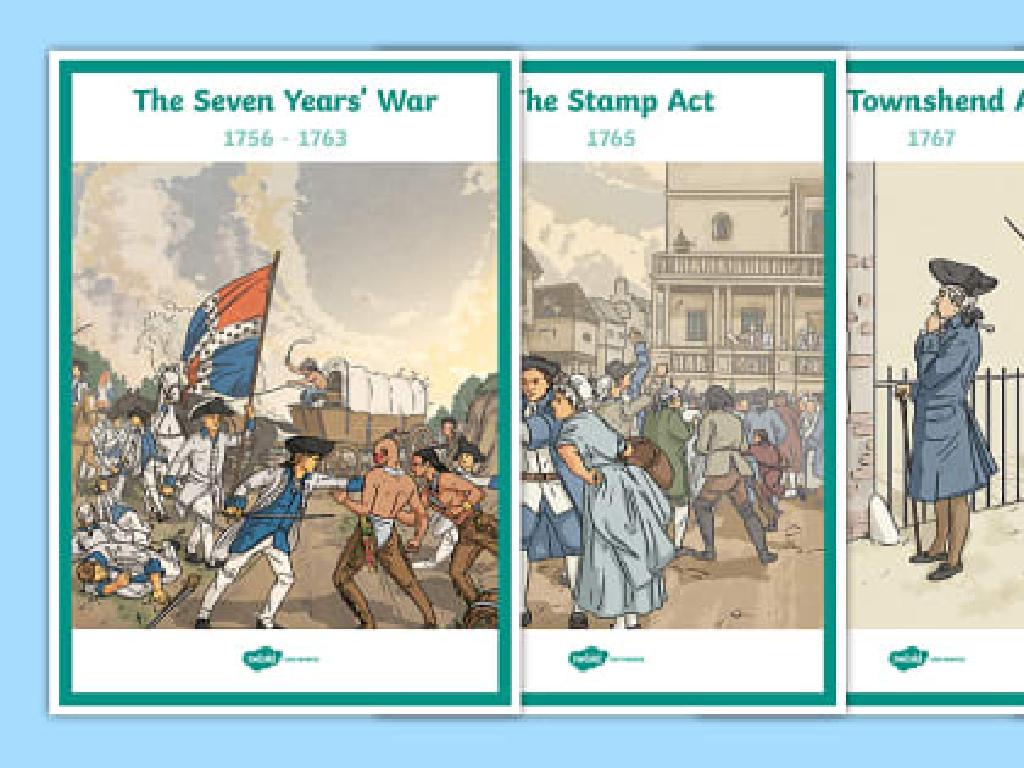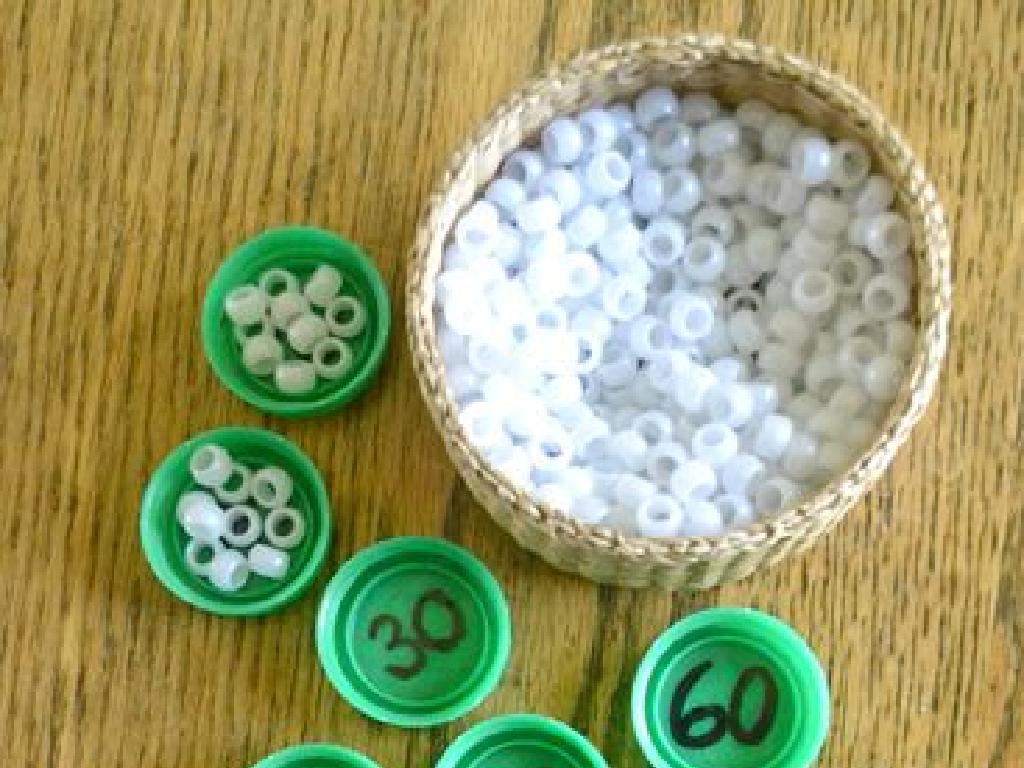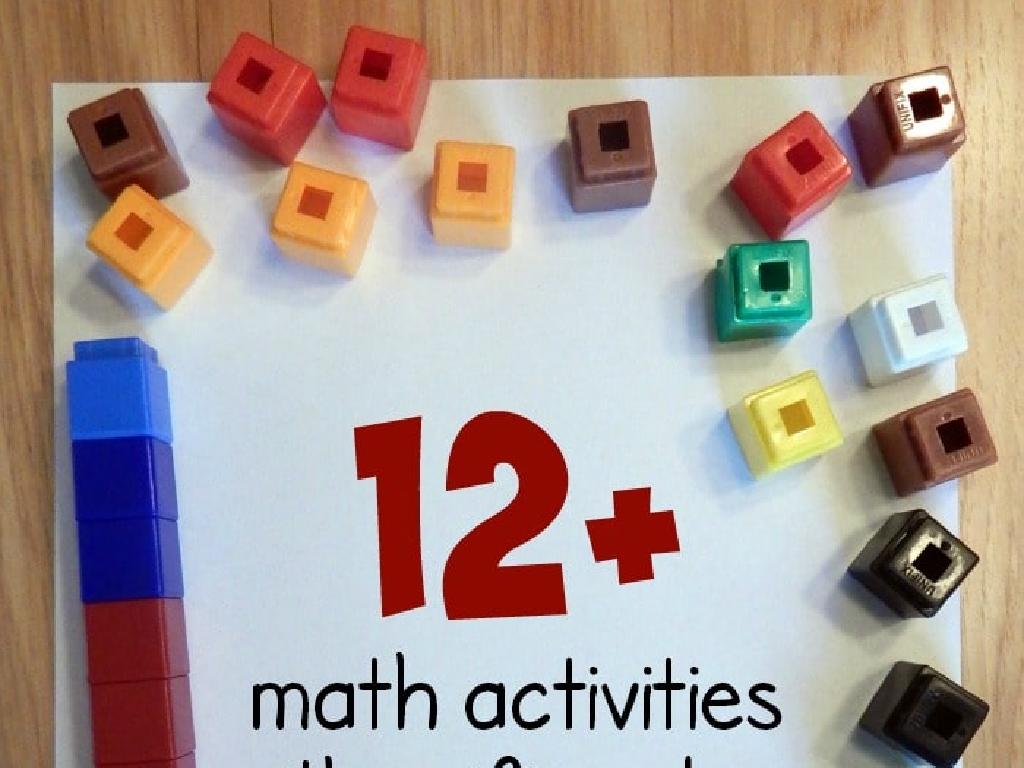Choose Customary Units Of Distance, Mass, And Volume
Subject: Science
Grade: Eighth grade
Topic: Units And Measurement
Please LOG IN to download the presentation. Access is available to registered users only.
View More Content
Introduction to Customary Units of Measurement
– Understanding units and measurement
– Units are standards for expressing and comparing quantities
– The need for standard units
– Standard units ensure consistency in communication of measurements
– Exploring customary units
– Customary units are traditionally used in the U.S.
– Today’s focus: Distance, Mass, Volume
– We’ll learn about inches, pounds, and gallons as examples
|
Begin the lesson by explaining the concept of units and measurement, emphasizing the importance of having a common language for quantifying length, weight, and capacity. Highlight the necessity of standard units for clear communication, especially in science. Introduce customary units, which are primarily used in the United States, and explain that today’s lesson will focus on understanding and choosing the appropriate customary units for measuring distance (inches, feet, yards, miles), mass (ounces, pounds, tons), and volume (cups, pints, quarts, gallons). Provide examples and real-life applications to help students grasp the concepts.
Customary Units of Distance
– Inches, Feet, Yards, Miles
– Usage of each distance unit
– Use inches for small objects, feet for room dimensions, yards for field lengths, and miles for long distances.
– Book width in inches
– Example: A standard book’s width is typically measured in inches.
– Trip distance in miles
– Example: The distance from home to school is best measured in miles.
|
This slide aims to familiarize students with the customary units of distance commonly used in the United States. Students should understand that inches are used for small measurements, such as the width of a book. Feet are a step up and are often used to measure the dimensions of a room. Yards are used for slightly larger distances, such as the length of a football field. Miles are used for long distances, such as the distance one would travel from home to school. Provide students with everyday examples to help them visualize when to use each unit. Encourage them to think of other examples and to practice converting between these units.
Customary Units of Mass
– Understanding ounces, pounds, tons
– Smallest unit for lightweight objects
– Selecting the right mass unit
– Common unit for everyday items
– Example: Bread in ounces
– A loaf of bread typically weighs about 16 ounces
– Example: Body weight in pounds
– Average human body weight is measured in pounds
|
This slide aims to educate students on the customary units of mass commonly used in the United States. Ounces are used for small, lightweight items, such as a loaf of bread. Pounds are the standard unit for items of a moderate weight, including human body weight. Tons are reserved for very heavy objects, like cars. It’s crucial for students to understand how to choose the appropriate unit of mass based on the weight of the object they are measuring. Provide examples of each unit to help students grasp the concept. Encourage them to think of other examples and to practice converting between these units.
Customary Units of Volume
– Understanding Cups, Pints, Quarts, Gallons
– Smaller to larger: cups < pints < quarts < gallons
– Appropriate usage of volume units
– Cups for small servings, pints for personal beverages, quarts for larger containers, gallons for bulk
– Example: Water in cups
– A glass of water is typically about 1-2 cups
– Example: Gasoline in gallons
– A car tank is filled with gallons of gasoline
|
This slide introduces students to the customary units of volume used in the United States, including cups, pints, quarts, and gallons. It’s crucial to help students visualize and understand the hierarchy of these units from smallest to largest and to provide real-life examples that illustrate when to use each unit. For instance, cups are used for small amounts of liquids like a glass of water, pints are often used for containers of milk or personal beverage sizes, quarts are suitable for larger amounts like engine oil, and gallons are used for even larger quantities such as gasoline for cars. Encourage students to think of other examples and to practice converting between these units for a better grasp of their relative sizes.
Converting Between Customary Units
– Converting units of distance
– Use conversion factors to change miles to feet, etc.
– Converting units of mass
– Learn to switch between ounces, pounds, and tons
– Converting units of volume
– Understand how to convert gallons to quarts and more
– Interactive conversion practice
|
This slide introduces the concept of converting between different customary units of distance, mass, and volume. Start by explaining conversion factors and how they are used to convert units of distance such as miles to feet, inches to yards, etc. Then, move on to mass, showing how to convert between ounces, pounds, and tons. Follow with volume conversions, such as gallons to quarts, pints, and cups. Conclude with an interactive activity where students convert various measurements to different units. Provide step-by-step solutions to practice problems and ensure that students understand the process before moving on to the activity. The activity should be hands-on, allowing students to engage with the material and apply what they’ve learned.
Real-World Applications of Measurement Units
– Importance of accurate measurement
– Precision in measurement is vital for safety, efficiency, and economy in various fields.
– Professionals using customary units
– Engineers, carpenters, and pharmacists rely on accurate measurements for success.
– Classroom measurement activity
– Use rulers, scales, and measuring cups to measure objects around the classroom.
– Estimation vs. precise measurement
– Learn to estimate before measuring to develop a sense of scale and improve prediction skills.
|
This slide emphasizes the significance of choosing the correct customary units of distance, mass, and volume in real-world scenarios. Accurate measurements are essential in many professions to ensure safety, quality, and functionality. For instance, engineers must use precise measurements in designing structures to prevent failures. Carpenters need to measure materials for construction accurately, and pharmacists must measure medication doses correctly to ensure patient safety. The classroom activity is designed to give students hands-on experience with measuring objects using different units and tools. It will also help them understand the importance of estimation skills in everyday life. Teachers should prepare a variety of objects for measurement and ensure that students understand how to use each measuring tool. Encourage students to discuss their estimation strategies and how close their estimations were to the actual measurements.
Class Activity: Measurement Scavenger Hunt
– Find items matching measurements
– Pair up for measuring and recording
– Share results with the class
– Discuss challenges encountered
|
This interactive class activity is designed to help students apply their knowledge of customary units of distance, mass, and volume in a practical setting. Students will work in pairs to search for items around the classroom that correspond to specific measurements provided by the teacher. They will use rulers, scales, and measuring cups to measure and record their findings. After the scavenger hunt, students will present their results to the class, fostering a discussion on any difficulties they faced during the activity. Possible challenges could include estimating measurements, converting between units, or finding objects that match the exact measurements. This activity will enhance their understanding of measurement units and their ability to estimate and measure objects in a real-world context.
Conclusion: Customary Units & Homework
– Recap: customary units
– Distance (inches, feet, yards, miles), mass (ounces, pounds), volume (cups, pints, quarts, gallons)
– Choosing the right unit matters
– Using an appropriate unit is crucial for accuracy in science and everyday life
– Homework: conversion worksheet
– Complete a worksheet on converting between units and selecting suitable ones for different scenarios
– Practice makes perfect
|
As we wrap up today’s lesson, remember that understanding and using the correct customary units for distance, mass, and volume is essential in science. It ensures accuracy and clarity when measuring and communicating results. For homework, students will reinforce their knowledge by completing a worksheet focused on converting between units and choosing the appropriate unit for various situations. This practice will help solidify their understanding and prepare them for real-world applications. Encourage students to think critically about why certain units are more suitable than others in different contexts.






